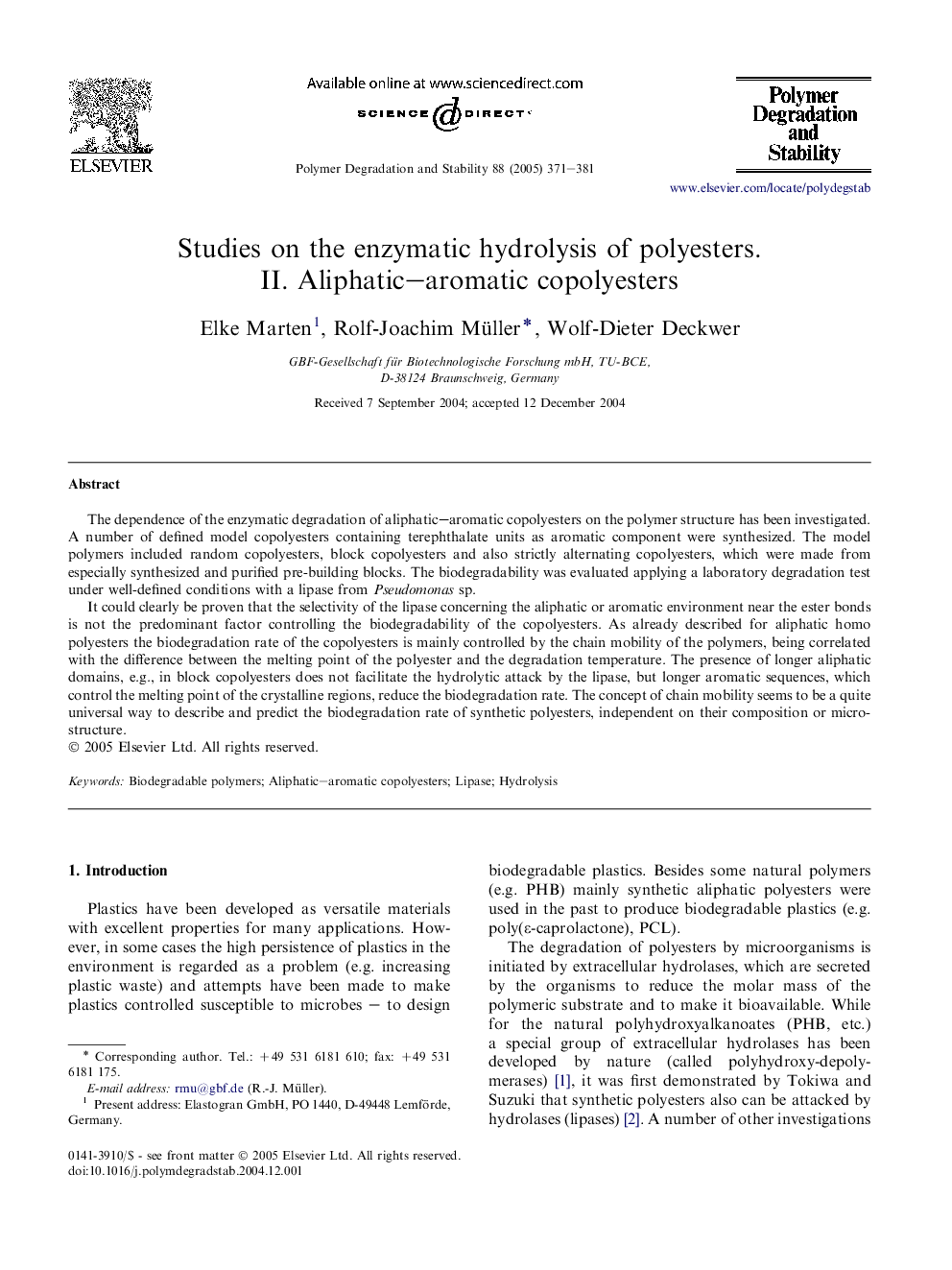| Article ID | Journal | Published Year | Pages | File Type |
|---|---|---|---|---|
| 9560346 | Polymer Degradation and Stability | 2005 | 11 Pages |
Abstract
It could clearly be proven that the selectivity of the lipase concerning the aliphatic or aromatic environment near the ester bonds is not the predominant factor controlling the biodegradability of the copolyesters. As already described for aliphatic homo polyesters the biodegradation rate of the copolyesters is mainly controlled by the chain mobility of the polymers, being correlated with the difference between the melting point of the polyester and the degradation temperature. The presence of longer aliphatic domains, e.g., in block copolyesters does not facilitate the hydrolytic attack by the lipase, but longer aromatic sequences, which control the melting point of the crystalline regions, reduce the biodegradation rate. The concept of chain mobility seems to be a quite universal way to describe and predict the biodegradation rate of synthetic polyesters, independent on their composition or micro-structure.
Related Topics
Physical Sciences and Engineering
Chemistry
Organic Chemistry
Authors
Elke Marten, Rolf-Joachim Müller, Wolf-Dieter Deckwer,
